Under Capricorn
6.2 /10 1 Votes
Initial DVD release June 17, 2003 Duration Country United Kingdom | 6.2/10 IMDb Genre Crime, Drama, Romance Language English | |||||||||||||||||||||||||||||||||
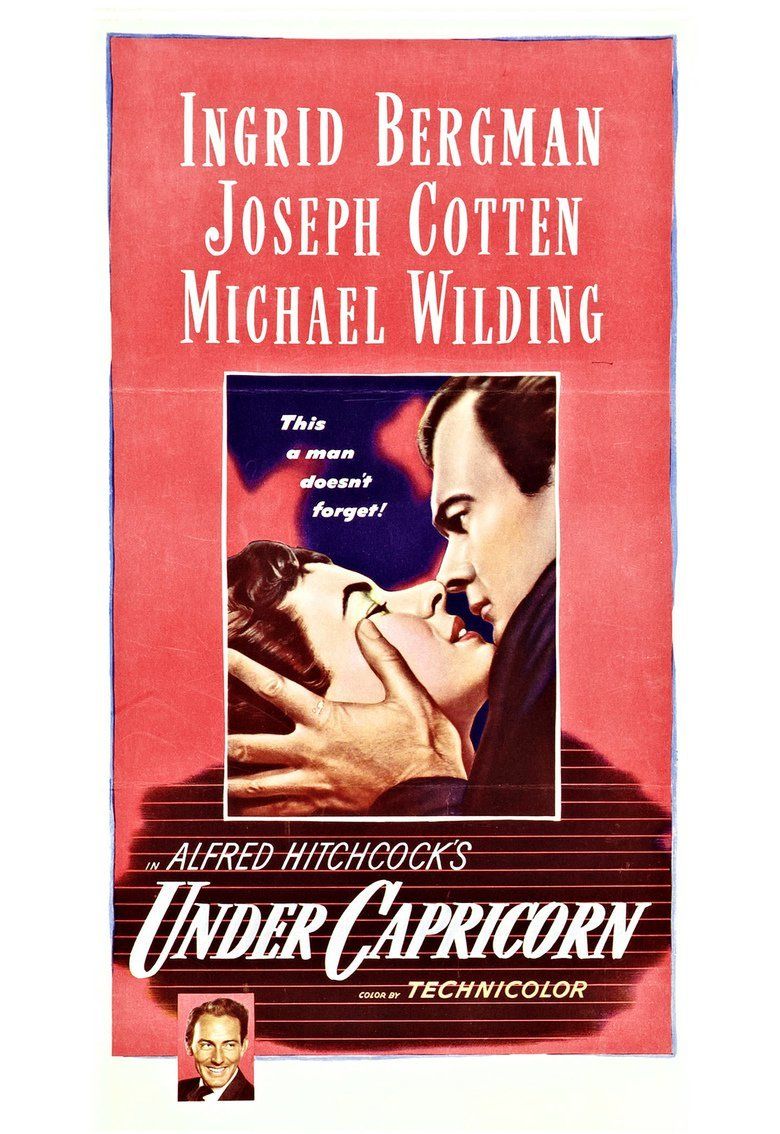 | ||||||||||||||||||||||||||||||||||
Release date 8 September 1949 Cast (Lady Henrietta Flusky), (Sam Flusky), Michael Wilding (Charles Adare), (Milly), (The Governor), (Mr. Corrigan)Similar movies Rabbit-Proof Fence , Walkabout , The Protector , Breakfast at Tiffany's , Jindabyne , Dead Heart Tagline Mystery, murder and passion from the master of suspense! | ||||||||||||||||||||||||||||||||||
Under capricorn trailer
Under Capricorn is a 1949 British historical thriller film directed by Alfred Hitchcock about a couple in Australia who started out as lady and stable boy in Ireland, and who are now bound together by a horrible secret. The film was based on the novel Under Capricorn (1937) by Helen Simpson, with a screenplay by James Bridie. It was adapted to the screen by Hume Cronyn. This was Hitchcock's second film in Technicolor, and like the preceding color film Rope (1948), it also featured 10-minute takes.
Contents
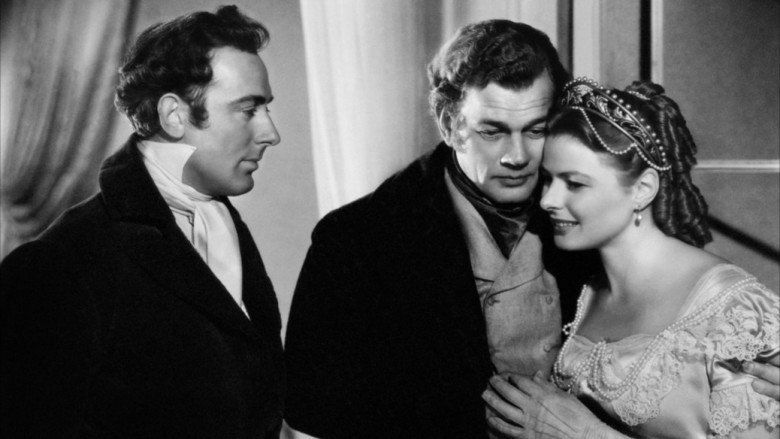
The film is set in colonial Sydney, New South Wales, Australia during the early 19th century. Under Capricorn is one of several Hitchcock films that are not typical thrillers; instead it is a mystery involving a love triangle. Hitchcock considered it to be one of his worst films and a disaster. Although the film is not exactly a murder mystery, it does feature a previous killing, a "wrong man" scenario, a sinister housekeeper, class conflict, and very high levels of emotional tension, both on the surface and underneath.

The title "Under Capricorn" refers to the Tropic of Capricorn, which bisects Australia. Capricornus is a constellation; Capricorn is an astrological sign dominated by the goat, which is a symbol of sexual desire.

Plot
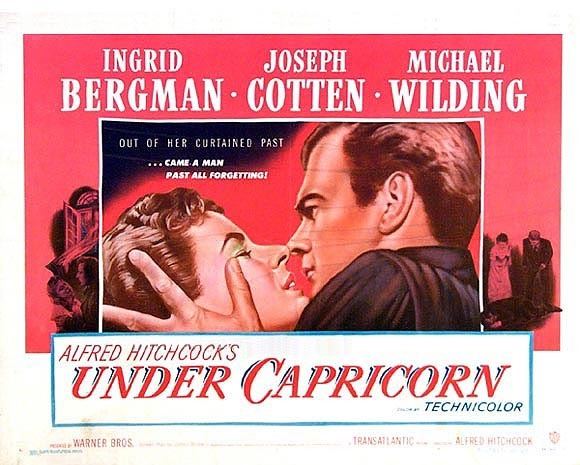
In 1831, Sydney is a frontier town, full of rough ex-convicts from the British Isles. The new Governor, Sir Richard (Cecil Parker), arrives with his charming and cheery but indolent nephew, the Honorable Charles Adare (Michael Wilding).

Charles, who is hoping to make his fortune, is befriended by gruff Samson Flusky (Joseph Cotten), a prosperous businessman who was previously a transported convict, apparently a murderer. Sam says that because he has bought the legal limit of land, he wants Charles to buy land and then sell it to him for a profit so that Sam can accumulate more frontier territory. Though the Governor orders him not to go, Charles is invited to dinner at Sam's house.
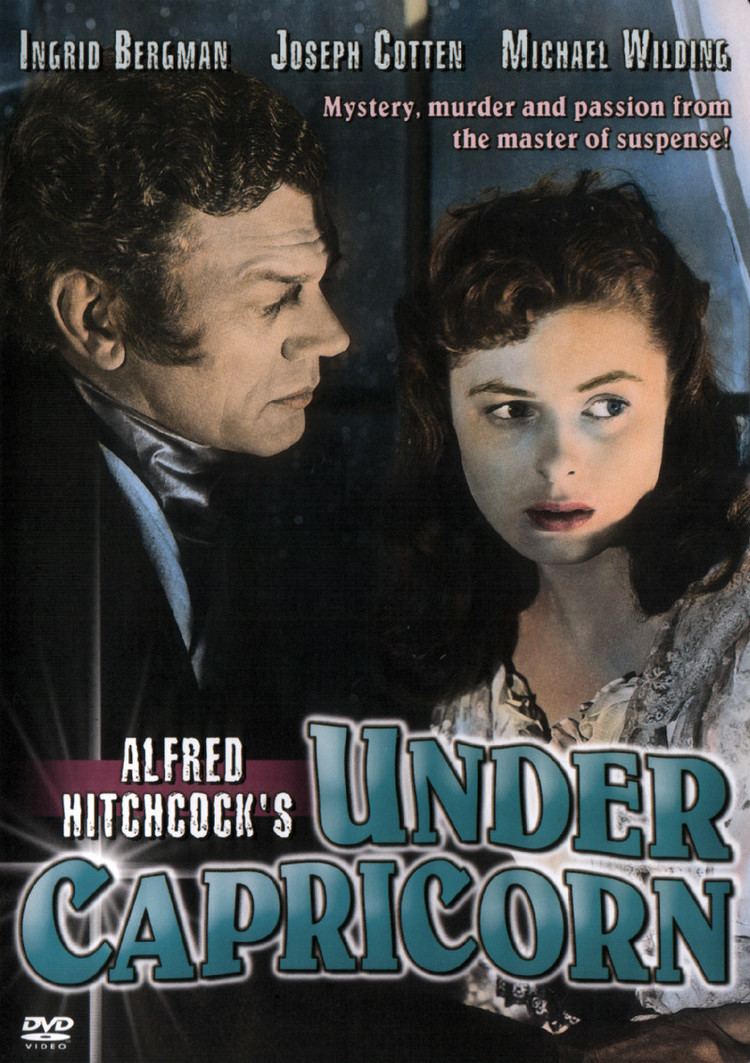
Charles discovers that he already knows Sam's wife, Lady Henrietta (Ingrid Bergman), an aristocrat who was a good friend of Charles' sister when they were all children in Ireland. Lady Henrietta is now an alcoholic who is socially shunned.
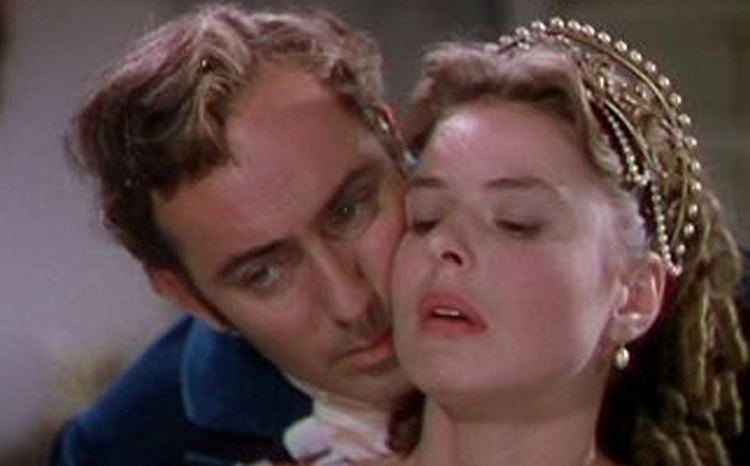
Sam invites Charles to stay at his house, hoping it will cheer up his wife, who is on the verge of madness. The housekeeper, Milly (Margaret Leighton), has completely taken over the running the household, and is the one who secretly feeds Lady Henrietta alcohol, hoping to destroy her and win Sam's affections.
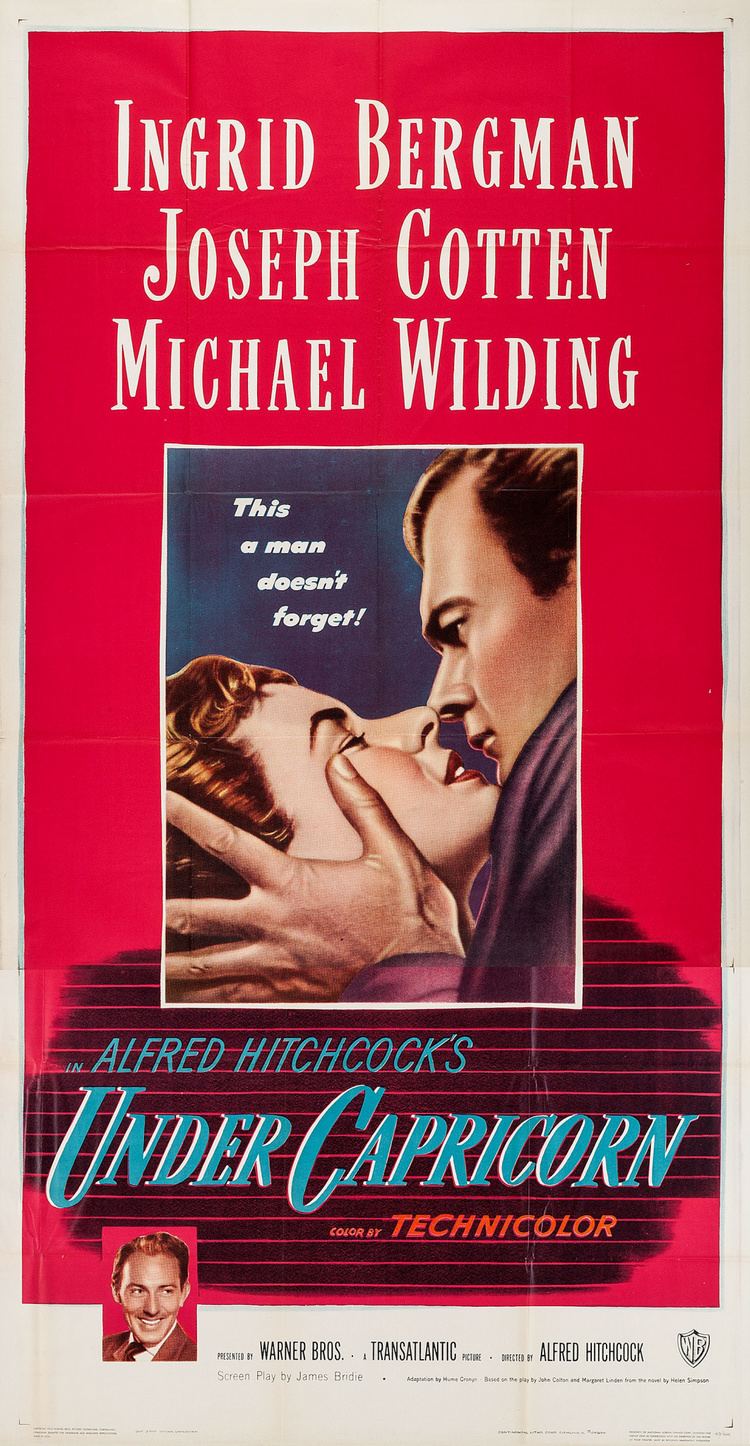
Gradually, Charles restores Henrietta's self-confidence. They become closer and closer, and eventually they share a passionate kiss. But Henrietta explains that she and Sam are bound together most profoundly: when she was young, Sam was the handsome stable boy. Overcome with desire, they ran away and married at Gretna Green. Henrietta's brother, furious that aristocratic Henrietta had paired up with a lowly servant, confronted them. Her brother shot at them and missed; she then shot her brother fatally. Sam made a false confession to save her, and was sent to the penal colony in Australia. She followed him and waited seven years in abject poverty for his release.
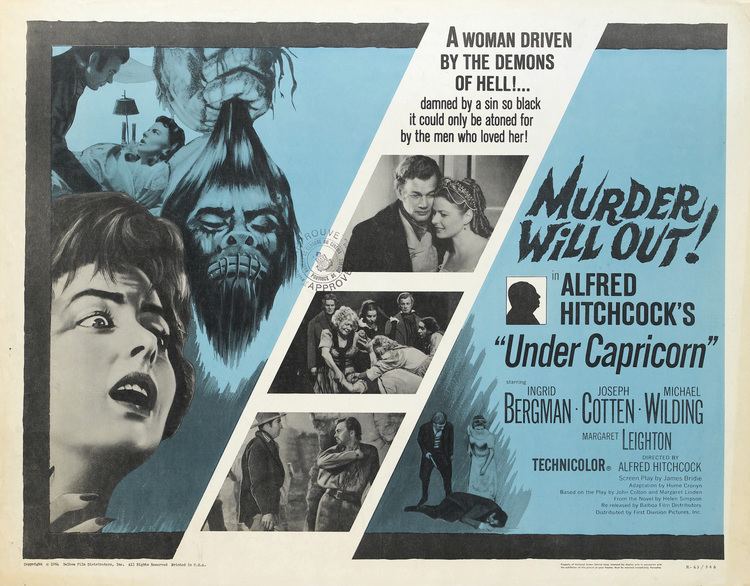
After listening to Milly's greatly exaggerated stories of what Charles did in Lady Henrietta's bedroom, Sam becomes furious and orders Charles to leave. Taking Sam's favorite mare in the dark, Charles has a fall and the horse breaks a leg. Sam has to shoot her dead and, in a subsequent struggle over the gun, seriously wounds Charles. Sam will now be prosecuted again for attempted murder. At the hospital, Henrietta confesses to the Governor that Sam was wrongly accused of the first crime of murder; she was the one who shot and killed her brother. By law she should be deported back to Ireland to stand trial.
Milly, still plying Henrietta with drink, is using a real shrunken head to fake hallucinations. Milly then attempts to kill Henrietta with an overdose of sedatives; she is caught in the act and ordered out in disgrace.
The Governor, Sir Richard, has Sam arrested and charged with the attempted murder of Charles. Sir Richard ignores Henrietta's claim that Sam is innocent of both crimes. However, Charles decides to bend the truth; he says, on his word as a gentleman, that there was no confrontation, and no struggle over the gun. It was all an accident.
Finally we see Sam and Henrietta together smiling at the dock. They bid Charles a fond and grateful farewell; he is going back to Ireland.
Production
The movie was co-produced by Hitchcock and Sidney Bernstein for their short-lived production company, Transatlantic Pictures, and released through Warner Brothers. The film starred Michael Wilding, Ingrid Bergman, Joseph Cotten, and Margaret Leighton.
The film was Hitchcock's second film in Technicolor and uses ten-minute takes similar to those in Hitchcock's previous film Rope (1948). It is thought that the audience had imagined Under Capricorn was going to be a thriller, which it was not — the plot was a domestic love triangle with a few thriller elements thrown in — and this ultimately led to its box office failure. However, the public reception of the film may have been damaged by the revelation in 1949 of the married Bergman's adulterous relationship with, and subsequent pregnancy by, the married Italian film director Roberto Rossellini.
The long take
In Style and Meaning: Studies in the Detailed Analysis of Film, Ed Gallafent says:
The use of the long take in Under Capricorn relates to three elements of film's meaning.
- Ideas of accessible and inaccessible space as expressed in the gothic house.
- The form in which characters inhabit their past
- The divergence or convergence of eyelines – the gaze that cannot, or must meet another’s.
All of these three elements can be linked to concepts of Guilt and Shame. In 1 and 2, the question is how something is felt to be present. In 3, it is difference between representation or sharing, of the past as flashback, and of the past as spoken narrative, where part of what is being articulated is precisely the inaccessibility of the past, its experience being locked inside the speaker. As for 3, the avoided gaze is determining physical sign of shame.
Gallafent, professor of film at University of Warwick, also explains these aspects of Under Capricorn:
The inscription on the Flusky's mansion — Minyago Yugilla — means "Why weepest thou?"
St. Mary Magdalene (the patron saint of penitent sinners) in religious iconography: the bare feet, skull, the flail, the looking glass in which the beholder’s face is not always reflected, the jewels cast down to floor. All of these images are in the film. Sources for the imagery that Hitchcock might have had in mind are the paintings St. Mary Magdalene With a Candle (1630–1635) and St. Mary Magdalene With a Mirror (1635–1645), both by Georges de La Tour.
Note: "Minyago Yugilla", according to one source, is not written in a real language; however, according to other sources, it is in Kamilaroi (Gamilaraay), a now moribund Australian aboriginal language. See also this similar translation of the phrase "Minyilgo yugila." Further to be noted may be that "Woman, why weepest thou?" can be found in the Holy Bible in the Book of St John, 20:15.
Background
References
Under Capricorn WikipediaUnder Capricorn IMDb Under Capricorn themoviedb.org
